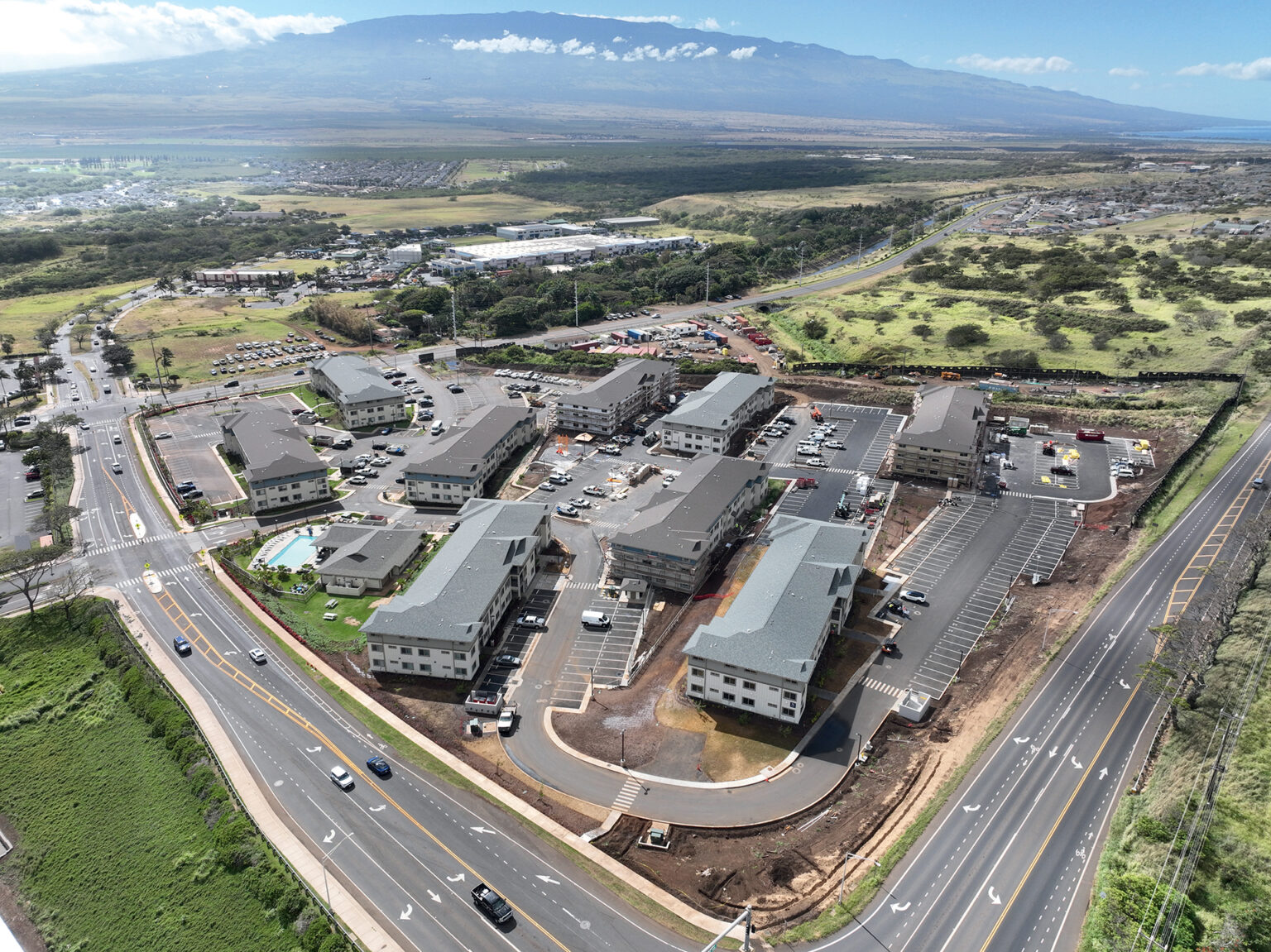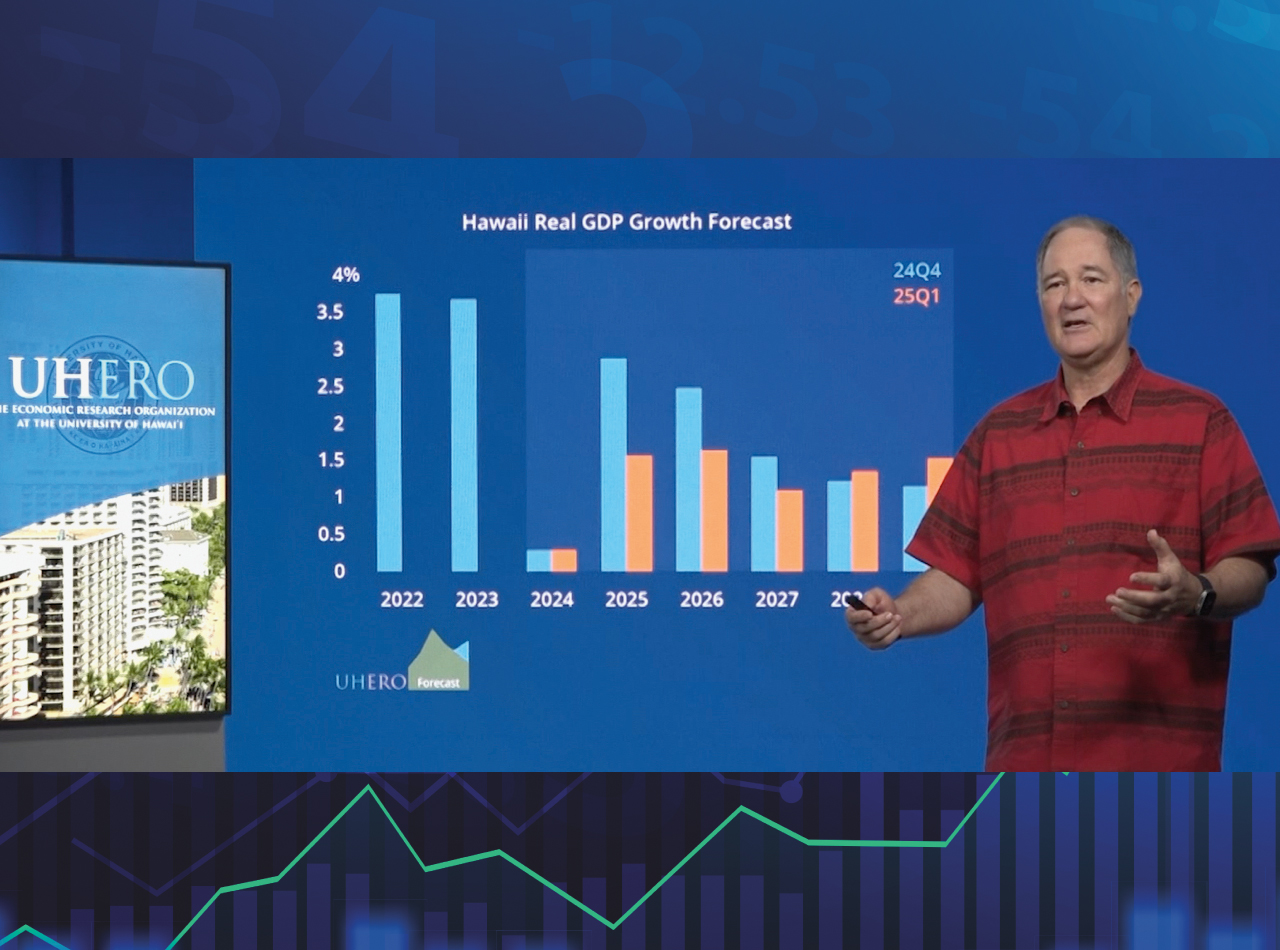There are still a lot of unknowns on Maui approximately 10 months after deadly wildfires swept through Lāhainā and upcountry areas.
Many families are still in need of housing. Others, having run out of options or time, have simply left Hawai‘i entirely to start anew elsewhere.
In the wake of such upheaval, how does a community make sense of what’s transpired and find its way forward?

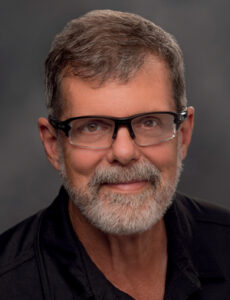
THE MOOD ON THE GROUND
“It’s mainly just uncertainty of how [the rebuilding] is going to progress,” says Anthony Musielak, project executive for Moss & Associates, when asked about the general mood on the island. “Even from a construction standpoint, we haven’t seen too many permanent housing solutions come across our desk.”
Musielak says he has seen a lot of modular homes and temporary solutions, but long-term solutions remain elusive.
The fire destroyed over 2,000 homes and displaced more than 13,000 Maui residents. At a March 27 news conference, Gov. Josh Green said more than 3,000 residents are still living in hotels, with 30 being moved into longer-term housing each day.
County, state and federal efforts continue to move forward to clear debris on destroyed properties and find solutions for those who were displaced, but a housing shortage that existed long before the fires has only exacerbated the situation, making the search for permanent housing solutions even more difficult.
“There’s a notable sentiment of frustration, evolving into resignation, regarding the perceived slow pace of recovery,” says Brad Espedal, chief operating officer at Arita Poulson General Contracting LLC (APGC). “While initial frustrations are understandable, there’s a growing realization that the recovery process will be gradual.
“We’ve received insights from FEMA representatives indicating that such timelines are common. For instance, in the aftermath of the 2018 Camp wildfire in California, only 20 percent of the structures had been rebuilt five years later.”
IMMEDIATE EFFECTS AND RESPONSE
Over 100 people died and more than 2,000 homes were destroyed on that fateful day Maui was disrupted
by the worst disaster in state history. To say it’s been a challenging year for residents would be an understatement.
Depending on your lens, the last 10 months have either passed quickly or felt like an eternity. In the hours, days and weeks following the fires, Maui residents, institutions and businesses all struggled to make sense of what happened and how to respond.
HPM Building Supply operates several businesses on Maui, including retail stores, lumber yards and a design center, plus a rain gutter supply and installation service.

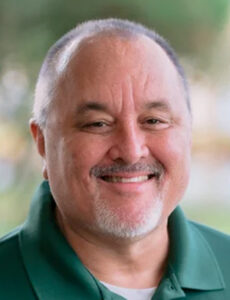
Gary Danzl, HPM’s Maui regional manager, says company operations as well as staff were significantly affected by the tragedy.
“Five of our owner-employees have been directly impacted by the wildfires, with some losing their homes and personal possessions and others being forced to evacuate, facing substantial personal and emotional hardships,” he says.
According to Arita Poulson’s Espedal, multiple company projects on Maui’s west side were “postponed or canceled,” which continue to affect current operations.
“We have multiple employees and/or their families who lost their houses in the wildfire,” he says. “We have had at least one key employee and his family move to the mainland due to the housing shortage.”
Adds Moss’ Musielak: “We did have family members of workers lose their homes. I think we had two family members of workers on the [Kaulana Mahina] job site actually lose people in their family.
“From an operations standpoint, I’d say that week was kind of a very unknown week for everybody. The project progressed, but there was a lot of uncertainty, a lot of people not coming into work. We weren’t fully staffed,” he says.
Almost a year later, staffing remains a major concern.
BIG QUESTIONS, BIGGER CHALLENGES
Uncertainty over the future is a common theme as timelines progress toward the rebuilding phase in Lāhainā.
“I do think the biggest issue that’s going to arise from all of this is when [construction ramps up]; the labor force is not big enough on Maui to take care of this,” says Musielak.
He points out attempts to bring over workers from the neighbor islands has only further highlighted the housing issue.
“I’d say 50 percent, 60 percent of our subcontractors are O‘ahu-based subcontractors,” Musielak says. “So they’re having a very hard time finding places to rent and live to even finish building these projects, because the housing crisis has obviously gotten much worse.”
According to Espedal,“the labor market, already tight, has been further strained, leading to increasing labor prices due to shortages.
“Previously, APGC would bring in workers from O‘ahu and provide short-term housing on Maui, but this option is now limited, forcing workers to commute daily from O‘ahu, increasing labor costs by 40 percent to 100 percent per worker.
“Maui is projected to require an additional 2,000 to 2,500 construction trades workers by 2025 to meet demand. However, the lack of available housing for these workers poses a significant hurdle,” Espedal says.
Finding, securing and housing a workforce isn’t the only concern. The building permit process remains an issue.
“Building permit approval timing, already problematic before the wildfires, has been further pressured,” says Espedal.
HPM is doing its part to try and mitigate this particular crisis.
“Time is of the essence, and we urgently require assistance,” says Danzl. “We are updating our residential home plans to simplify the permit review and issuance process [and] are confident that these efforts will lead to a more efficient and expedited review process for residential home permits.”
Time will tell if those efforts will be enough.
CURRENT INITIATIVES
What is clear moving forward is that collaborative efforts from all stakeholders, from the private sector to public, is required. All must be part of the solution, with everyone doing their part to help the community heal and move forward.
APGC had a major role in the construction of the ‘Ohana Hope Village, a mid-term housing solution built in conjunction with local nonprofit Family Life Center and architectural firm Hawaii Off Grid.
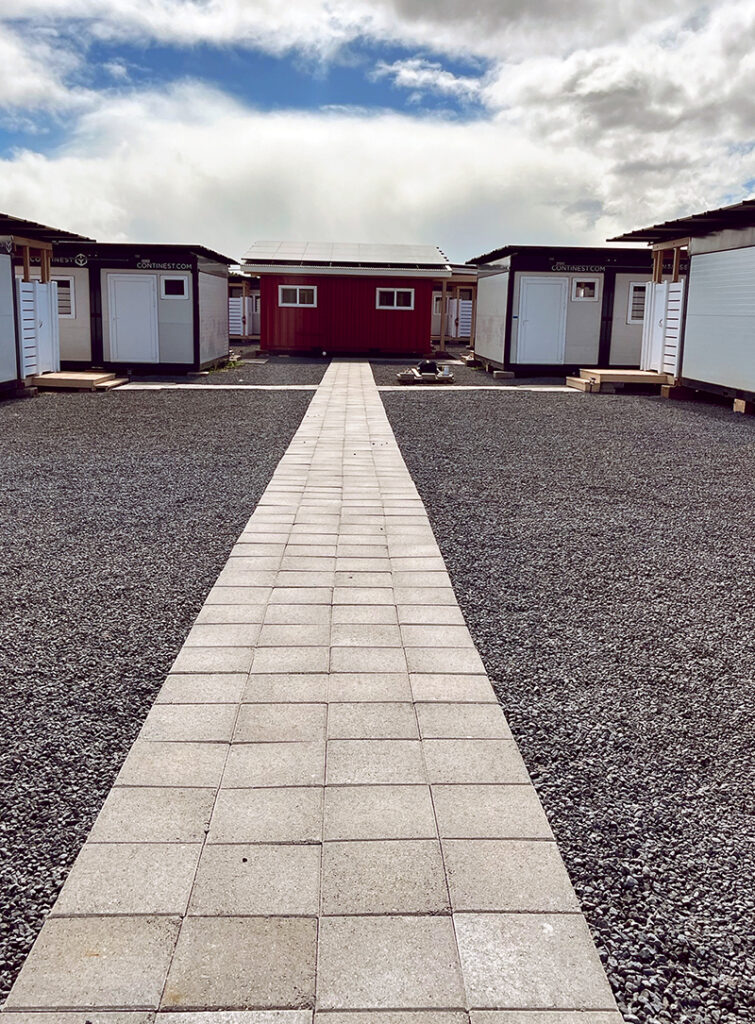
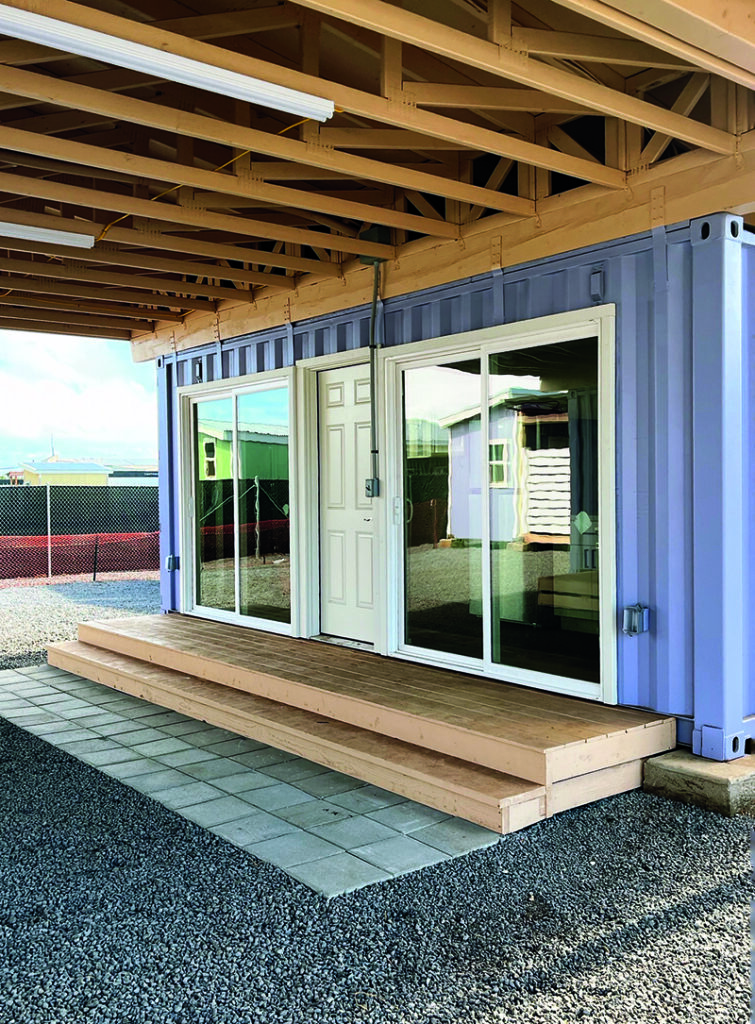
“Arita Poulson became involved in the ‘Ohana Hope Village project through an outreach from the Family Life Center to Melissa Humphrey, a project manager at Layton Construction who was supporting the project on a volunteer basis,” Espedal explains. “Melissa then reached out for help from the Construction Industry of Maui (CIM), where Tom Noble, our senior project manager and a CIM board member, stepped forward to offer Arita Poulson’s partnership in managing the construction of the project.”
‘Ohana Hope Village opened in April, and when fully completed will be able to accommodate approximately 500 residents and provide support services before eventually transitioning them toward more permanent housing solutions.
HPM also pivoted to focus on helping support their owner-employees and the greater community.
“Our Lāhainā location was fortunate to survive the wildfire, though it remained closed for a month following the wildfire,” says Danzl. “This allowed HPM to focus their energies on distributing supplies to hubs who were active in relief operations.”
HPM has also raised over $20,000 for the Hawai‘i Community Foundation’s Maui Strong Fund and maintained ongoing efforts with local relief organizations to provide supplies to those in need of assistance.
“Our engagement extends beyond financial contributions,” Danzl says. “[We are] collaborating … with county, state and federal agencies, as well as private sector stakeholders, eager to contribute, to explore various housing solutions for those affected.
“We’ve also opened up our offices to serve as a workspace for working groups and boards dedicated to finding the most effective and sustainable path forward in Maui’s recovery journey. Listening attentively to our customers and community members is essential in grasping the shifting needs during this recovery period.
“Maintaining our collaborative partnerships, which have been instrumental to our success, remains essential. We are eager to work alongside a diverse range of organizations, including state and local government, the federal sector, private firms and local homeowners, all of whom are seeking meaningful ways to contribute to the recovery efforts,” says Danzl.
ONWARD AND UPWARD
When the fires occurred, Moss had already started work on Kaulana Mahina, an affordable housing development.
“I will say specifically on this job, Kaulana Mahina, there is a sense of pride because we’re one of the first projects providing permanent housing,” says Musielak.
While not located on the west side of Maui where the fires were the most devastating, the project is still significant in its timeliness as one of the first new-build rental projects to be completed since the fires. Displaced residents have already started moving into the community, which consists of a total of 324 units, with 195 of those units designated as workforce housing.
Musielak is also overseeing Moss’ work on Hale O Pi‘ikea, another affordable housing community currently under construction, that will eventually provide 233 affordable rental units in Kīhei.
Arita Poulson is committed to being involved in further recovery efforts, from the cleanup to rebuilding.
“We are actively attending community meetings and participating with groups like CIM and the Maui Construction Industry Coalition,” says Espedal. “With 37 years of building experience on Maui, APGC is positioned to play a crucial role in the island’s cleanup, recovery and rebuilding efforts.
“As the island looks toward the future, APGC’s commitment to safety, sustainability and job creation will continue to make a significant impact on Maui’s landscape and its residents’ lives.”
Says Danzl: “Maui is enveloped in feelings of resilience, determination and a profound sense of community. Within the HPM family, there’s a shared commitment to support our affected owner-employees and their families, alongside a unified effort to restore our operations and aid the island’s recovery process.
“In the heart of Lāhainā, a strong sense of protectiveness and pride prevails, particularly among families whose roots extend back nine generations.
“The residents of Old Town Lāhainā are passionate about preserving the unique character and heritage of their cherished town,” he says.
Despite lingering uncertainties, forward progress is evident, if slow. The Lāhainā community’s pride and protectiveness, reinforced by a shared commitment from all, just may be the beacon that’s needed to guide them through.

